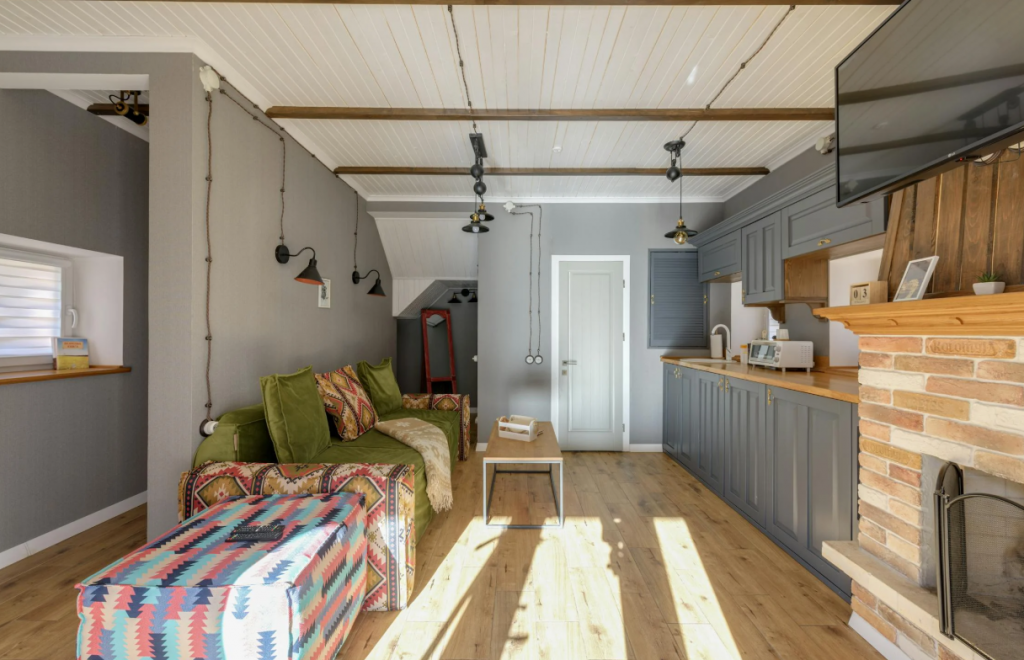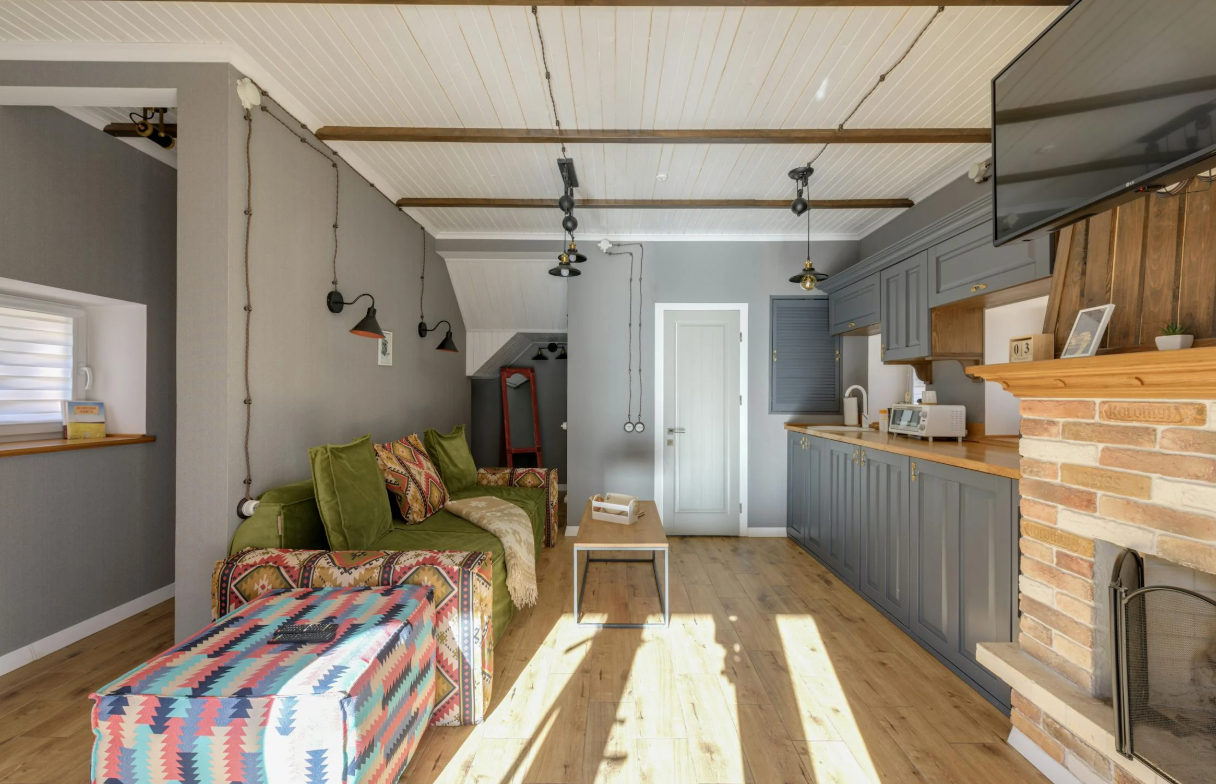When it comes to interior design, the concept of eclectic elegance has become increasingly popular. It’s all about seamlessly blending the best of both worlds: the sleek, contemporary lines of modern design and the rich, nostalgic charm of vintage pieces. But how exactly does one achieve this delicate balance? In this article, we’ll explore how mixing modern and vintage elements can create a timeless look that feels both fresh and sophisticated.
What is Eclectic Elegance?
At its core, eclectic elegance is about embracing diversity in design. It’s a fusion of styles, eras, and influences that, when done right, results in a space that feels uniquely personal and beautifully curated. The elegance comes from the thoughtful mixing of contrasting elements—modern and vintage pieces—that complement each other rather than clash.
Why Mixing Modern and Vintage Works
Combining modern and vintage elements in your home isn’t just a trend; it’s an art. The beauty of this mix lies in how the two styles interact. The modern pieces bring sleek lines and fresh design, while vintage pieces add character and depth. The combination of both creates a dynamic and harmonious space that feels timeless yet contemporary.
Contrast Creates Visual Interest
One of the main reasons mixing modern and vintage works is because contrast naturally creates visual interest. Vintage pieces often have ornate details, intricate craftsmanship, and a sense of history, while modern items are typically cleaner, more minimalist. When combined, the eye is drawn across the room, discovering new details, textures, and elements. This contrast keeps the space visually engaging.
The Balance of Old and New
The key to eclectic elegance lies in finding the right balance between old and new. A vintage piece can ground a space with its timeless charm, while modern elements can add freshness and lightness. By blending these two, you can avoid the heaviness of a room filled solely with antique items, while also steering clear of a sterile, overly minimalist space.
Why Vintage Pieces Matter
Vintage pieces are more than just old furniture—they’re artifacts of history, craftsmanship, and design. Each vintage item has a story to tell and often carries a unique character that new furniture can’t replicate. Vintage items are also sustainable, giving you the opportunity to incorporate pieces that have already stood the test of time.
The Charm of History and Craftsmanship
Vintage furniture often boasts craftsmanship that’s difficult to find in mass-produced, modern designs. Whether it’s a hand-carved wooden cabinet or a mid-century modern chair, these pieces bring a level of detail and artistry that new items may lack. Incorporating vintage elements into your space allows you to celebrate the craftsmanship of a bygone era.

Timeless Design Elements
Many vintage items feature timeless design elements, such as rich wood tones, elegant lines, and intricate patterns. These designs transcend trends and maintain their beauty over decades, making them a perfect complement to modern pieces. The sophistication of vintage furniture adds a layer of refinement to a space, creating an atmosphere that feels both lived-in and luxurious.
Why Modern Pieces Matter
Modern design focuses on simplicity, functionality, and comfort. While vintage pieces bring charm and nostalgia, modern furniture provides a sense of order, ease, and practicality. The clean lines and minimalistic aesthetic of contemporary pieces create a calming environment and prevent a room from feeling too cluttered.
Contemporary Design and Comfort
Modern furniture is often designed with comfort in mind. Cushioned sofas, ergonomic chairs, and sleek storage solutions are all designed to enhance daily living. When mixed with vintage elements, modern pieces provide comfort without sacrificing style.
The Influence of Minimalism and Functionality
One of the defining features of modern design is its emphasis on minimalism and functionality. It’s about making the most of your space with less clutter and more purpose. Modern furniture tends to be more versatile, fitting seamlessly into a variety of spaces, whether it’s a cozy apartment or a spacious living room. This functional aspect is important when balancing the more ornamental nature of vintage pieces.
How to Mix Modern and Vintage Pieces Successfully
Achieving eclectic elegance requires a bit of finesse, but it’s entirely possible with the right approach. Here are some key tips to help you blend modern and vintage pieces into a cohesive design.
Finding the Right Balance
The first step is finding the right balance between old and new. Too many vintage pieces can make a room feel like a museum, while too many modern items can strip the space of personality. Try mixing a few key vintage items with modern pieces to create contrast without overwhelming the space.
Layering Modern with Antique
When layering modern and vintage items, think about the scale and proportion of each piece. A modern sofa can pair beautifully with a vintage coffee table, while a modern floor lamp can stand tall next to an antique armchair. It’s about creating layers that feel natural, not forced.
Key Tips for Blending Modern and Vintage
Color Palette Coordination
One of the easiest ways to create harmony between modern and vintage pieces is by using a cohesive color palette. Neutral tones, like beige, gray, and white, work well as a backdrop, allowing both modern and vintage pieces to shine. You can add pops of color through accent pieces, like throw pillows or vintage artwork, to tie the look together.
Choosing Complementary Textures
Textures play a significant role in the eclectic style. Mixing hard materials like metal and glass with softer textures like velvet or leather can create an intriguing contrast. Vintage textiles, such as an antique rug or a vintage velvet chair, can add warmth and character to a modern room.
Creating Focal Points
In an eclectic space, focal points are crucial. A statement vintage piece, such as a grand chandelier or a bold painting, can act as a centerpiece in a room filled with more subtle modern furniture. The key is to ensure that the focal point doesn’t overwhelm the space but rather adds a touch of personality.
Using Color to Tie the Look Together
Color plays a vital role in creating harmony between modern and vintage pieces. A neutral color scheme can help unify the different design styles. Soft grays, whites, and beiges provide a clean canvas, while bolder accent colors like navy or mustard yellow can introduce vintage charm.
Accent Colors and Bold Statements
Incorporating bold accent colors into your decor—such as a vibrant vintage armchair or a colorful modern throw—helps define the character of the room. A single pop of color can pull together disparate elements and add a sense of fun to the space.
The Art of Layering Textures
Mixing different textures is another way to elevate the eclectic look. Combine soft materials like velvet and linen with harder elements like wood, marble, or metal. This contrast in textures adds depth and warmth to the design, making it feel cozy yet sophisticated.
The Role of Lighting in Eclectic Elegance
Lighting can transform the way modern and vintage pieces come together in a space. Consider mixing modern LED fixtures with vintage chandeliers or sconces. This not only enhances the eclectic feel but also provides functional lighting with an added layer of elegance

No responses yet